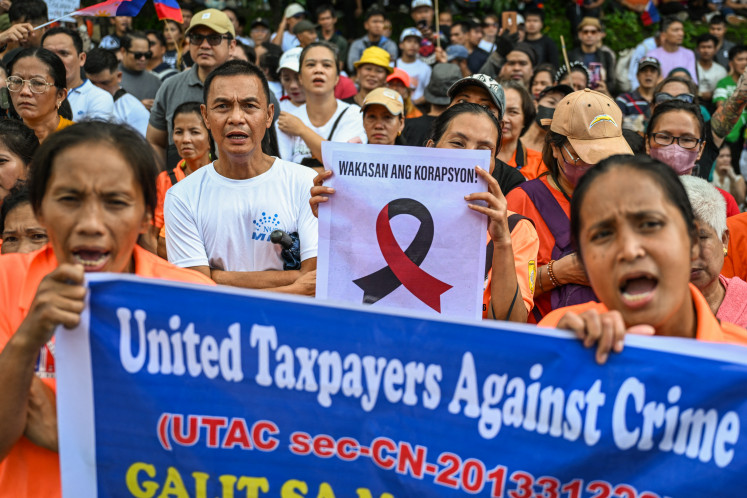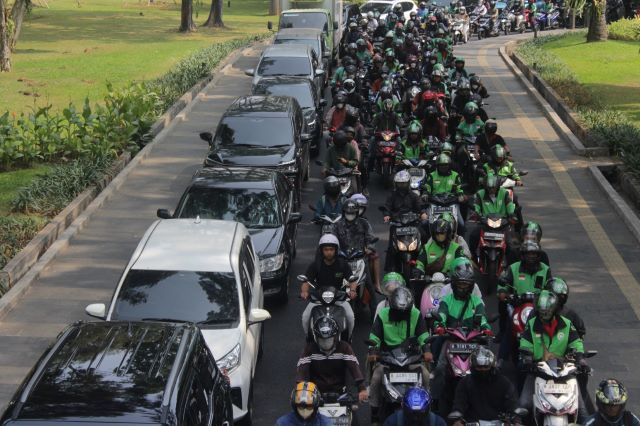Popular Reads
Top Results
Can't find what you're looking for?
View all search resultsPopular Reads
Top Results
Can't find what you're looking for?
View all search resultsWhy diabetes is a growing public health concern in Indonesia
Puskesmas offer early screening services for diabetes and its related complications at low or no cost to the patient.
Change text size
Gift Premium Articles
to Anyone
C
urrent evidence shows that diabetes ranks as an escalating global healthcare problem that has increased patient numbers alongside multiple economic and social impacts.
The prevalence of diabetes in Indonesia increased from 8.13 percent in 2017 to 8.71 percent in 2020, and the national health survey has already reported more than an 11 percent increase in 2023. This persistent disease primarily affects individuals over sixty, but recent lifestyle trends are causing newer groups to develop diabetes.
Diabetes in Indonesia imposed exorbitant costs on healthcare and created increasing complications between 2017 and 2024. Although the diabetic healthcare field has seen progress, Indonesia faces major obstacles to controlling the growing incidences of diabetes. Examining diabetes medication today, government intervention and the treatment pathways of the coming years provides a clear insight into the state of diabetes in Indonesia.
Most of the diabetic patients in Indonesia can, therefore, be categorized under type 2 diabetes, attributed to urbanization, improper diet and increased life expectancy. Some risk factors include obesity, high carbohydrate intake from staple foods like rice and minimal physical activity.
Urban people are more prone to diabetes due to changes in their lifestyle, while in rural areas diagnosis and treatment remain a challenge. Lack of public education and poor access to medical services worsen the situation, which underlines the importance of preventive measures stemming from changes in lifestyle and early detection activities.
In Indonesia, diabetes treatment focuses on oral antidiabetic medications, including metformin and insulin types, to handle blood sugar levels. Widely used in diabetic treatment, national health systems face significant obstacles in providing access in communities with limited healthcare infrastructure, and these clusters mostly occur in rural areas.
Many people struggle to afford medications because their prices exceed what those without the national health security (BPJS Kesehatan) can pay. Disparities in healthcare delivery create an additional problem by making treatment inaccessible for many patients who receive less than complete medical care. To minimize diabetes-related impacts, society must enhance the availability and monetary accessibility of diabetes medications.
Indonesian diabetics are first diagnosed and primarily managed in the primary care setting through Puskesmas (community health centers). These facilities also provide education and appointments to assess the status of the diseases in someone's life.
During severe or complicated conditions, territorial health facilities, where the patient can be referred to primary care, are unable to provide comprehensive treatment, and the patient is referred to the secondary or tertiary care level, such as regional hospitals.
However, the implementation of BPJS Kesehatan has not fully addressed these concerns. Individuals continue to face significant expenses for diagnostic procedures, specialized treatment and consultations with qualified medical professionals. The quality of care varies across different regions of the country, creating questions about the fairness and effectiveness of diabetes management services, particularly between urban and rural areas.
Like in many other countries, Indonesia's health care for diabetes incorporates medical intervention and patient enlightenment. Doctors, nurses, and dieticians stress self-glucose measurement, changes in food intake and compliance with treatment plans.
Puskesmas are also involved in continuing care on a community basis and are typically staffed by general practitioners and auxiliary nurses with a special emphasis on chronic diseases. Urban health facilities such as private clinics and hospitals offer almost all healthcare services and modalities, such as high-tech diagnostic procedures and technologically supported treatments.
Nevertheless, healthcare continues to face problems like congestion, poor resources and scarcity of qualified professionals. The government remains committed to the improvement of healthcare services by the extension of associated services and education courses for the healthcare workforce.
The government has become increasingly concerned about the increasing incidence of diabetes in its population and has tried many measures to address the problem from the primary, secondary and tertiary levels. Mass communication interventions focus on nutrition, exercise and body weight to the extent that these influence risk factors.
Puskesmas offer early screening services for diabetes and its related complications at either low or no cost to the patient. Educational programs that promote a healthy way of life are addressed in schools and workplaces. The government also added more services to BPJS Kesehatan, the Indonesian health insurance program, including the purchase of diabetes medications and treatment. These are meant to increase access to and outcomes of diabetes care and decrease the disease’s impact, particularly on the vulnerable poor.
To tackle the disease, there is a focus on growing the healthcare system and developing facilities in rural areas. Accompanying that, the basic health centers, or Puskesmas, are now supplied with diagnostic tools, such as glucose monitors, for instance, to improve early identification as well as management amongst the hard-to-reach populations.
Many training programs focus on common healthcare providers to cope with the shortage of specialist diabetes care for patients. There are also attempts being made to offer subsidies for expensive products such as insulin and new-generation therapies for all classes of society. Further, alliances with other health-related bodies in the world assist in offering technical support, as well as funds to back up various activities in the realm of public health. In so doing, the government aims at developing a sustainable solution for controlling diabetes throughout the country.
Diabetes in Indonesia is a growing public health concern, with rising prevalence and significant economic and social burdens. However, problems such as scarcity of finance, outreach programs in rural areas and poor resources are some of the issues that are still with us. Entrepreneurial outlooks emphasize sustainable approaches and the studies focus on Indonesia’s specific conditions for further development of treatments. Thus, a systemic, cross-sectoral concept is needed to promote greater governmental investment, cooperation between public and private organizations and community participation in the fight against diabetes.
It is also important to ensure that adequate measures to stop this epidemic are taken as soon as possible in order to reduce its chronic effects.
***
Micah Wanandi is a student of business and public health at the University of California, Irvine, the United States. Dicky Tahapary is an internal medicine specialist, School of Medicine, University of Indonesia, Jakarta.











